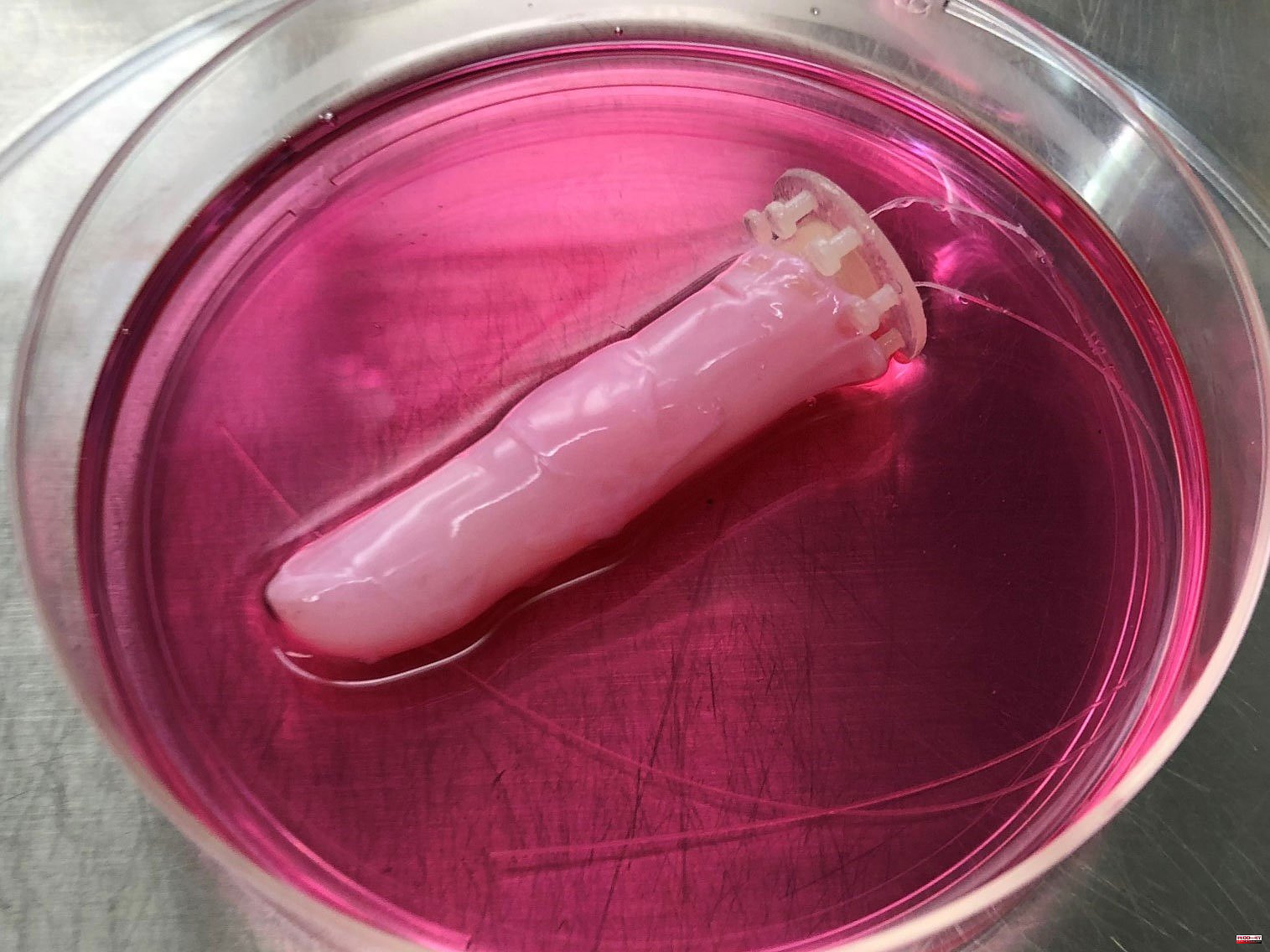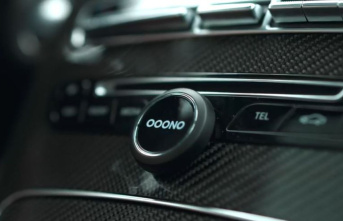Hollywood has created a number of iconic cyborgs, from the Six Million Dollar Man to RoboCop and the Terminator. These hybrids attempted to either destroy or save society according to their goals. They fascinate because they blurred the boundaries between robots and humans in ways that never occurred in human history, but could be part of the future.
Although fully functional cyborgs may be far off, scientists are developing a new way for humans and machines to interact. Japanese researchers have created a robotic finger made from living skin that was grown from human skin cells. This gives the robotic appendage a lifelike appearance, due to the fact that the skin can move and bend naturally like the three-joint finger. The skin feels more human-like than silicone skins and can heal when cut or divided. It is not possible to cover a single finger with artificially-produced human skin. The groundbreaking proof of concept is detailed in a paper published in Matter today. It raises many amazing possibilities.
Shoji Takeuchi is an engineer at the University of Tokyo who specializes in biohybrid technology. He says that although some silicone-skinned robotics may look human from a distance, closer inspection shows them to be artificial. His team decided to use biohybrid robots. He says, "Our goal was to create robots that look human-like." We believe that the only way to make a robot look human-like is to cover it in the same material as a human being, which is living skin cells.
Takeuchi and his colleagues created a skin-tissue mixture and then moulded the material around the artificial fingers to create the appendage.
The skin application was two-part. The first step was to mix collagen and human dermalfibroblasts, which are the main ingredients of our skin's connective tissue. After submerging the finger in the solution, the artificial 'dermis" remained attached to the digit for three days in an incubator. The tissues naturally shrinked to form a tight-fitting coating that covered the finger. This was used as a base for molding and applying a second layer, called an 'epidermis. It is made of human skin cells, which make up about 90 percent of our skin's outer layers. To produce the final product, the second solution was applied multiple times to the finger from different angles. It was left to cure for two weeks.
This skin is human-like and can be split or cut with a collagen bandage. It gradually becomes part of the skin. This technique was inspired by hydrogel grafts that are used to treat severe burns.
Robot skin was made from commercially available human skin cells. Takeuchi states that research on mass production is ongoing in other areas such as regenerative medicine, cultured meat research, and that his own research on clothing robots for human skin will benefit from the ongoing skin production research.
Another breakthrough in skin production that could be used to make robots has been the creation of sheets of live human skin. These skin sheets then need to be cut and tailored for the different shapes of the body. Caltech researchers recently revealed a printable artificial skin made from soft hydrogel and embedded with sensors that detect temperature, pressure, and even hazardous chemicals. It may prove difficult to mold printed skin to human anatomy's unique shapes, such as fingers and hands. Takeuchi's method makes it possible to create a form that fits without such effort.
Takeuchi also notes that the product is still much less resilient than our skin. Therefore, it needs to be maintained in good health. He explains that it is necessary for the product to be maintained over a prolonged period of time. "It needs a system with a vascular-like structure that provides constant nutrients." The team is currently pondering how to imitate blood vessels and sweat glands in order to deliver water to the skin.
However, appearance doesn't always matter. The skin of humans is more than just what they see. They touch the skin.
Maria Paola Paladino has been studying human attitudes towards robots at Trento University, Italy. She points out that there is a lot of scientific literature on touch and how it affects relationships and well-being. She says that research suggests that touching someone in a way that you are open to is a sign of kindness. "Can you feel human touch if you touch the robot skin?" This could be a really fascinating human experience.
A robot's sense of touch must also be improved if they are to interact naturally and safely with humans. Scientists have tested various electronic sensors and other techniques to instill a sense of touch in robots. Takeuchi will conduct his own experiment to replicate a natural nerve system in the skin to induce a sense touch.
The future of artificial intelligence has been a topic of much debate since the invention of robots. Some wonder how intelligent do we want robots, and what are their implications. Similar questions are asked about the appearance of intelligent machines. How human-like do we want them to appear?
There are many human reactions to robots. According to the Georgia Institute of Technology, college-aged adults prefer robots that look like humans. Older adults prefer robots with human faces. It is also important to consider the robot's purpose. The majority of people in the study preferred robots that clean houses to look more like machines. However, those that communicate with us and perform'smart tasks' like giving out information were more like us.
We'll increasingly interact with social robots every day. Robots can check you in to a hotel, take you through a workout, or even conduct your funeral. Some robots that look human-like are already in our lives, such as Hanson Robotics' Sofia. It even has its own social media accounts. David Hanson, the founder of Hanson Robotics, explains how machines can be made to look like us. IEEE Spectrum, a technology magazine, writes that "in designing human-inspired robots, we hold machines to the highest standard we know" and that "humanlike robotics is the apex in bio-inspired engineering."
Neuroscience research has examined the feelings of humans for robots. It found that our empathy is not as strong for them when they are treated badly. Robots are seen as less human than humans, so it is possible to make them more human-like. This might be helpful as robots are being increasingly socially assigned tasks such as caregiving and dispensing advice.
Paladino says that there are many good examples of humanoids like NAO. "On the contrary, there are very good examples of robots like R2-D2, where it's clear that it's a machine, but it's cute, and people really love it." Hollywood robots such as R2-D2 or WALL-E have gained legions of admirers without actually looking like humans. (The Smithsonian museums house their own humanoid robots. They are four-foot tall guides called the Pepper robots. These robots engage visitors by answering questions and giving information.
The "uncanny valley" concept, which was first proposed by Masahiro Mori in 1970 and also applies to creepy dolls, is a key part of the debate on robot appearance. Mori believes that robots becoming more human-like will lead to a positive response from humans, until the opposite happens. The theory is that robots become too human-like and the subtle, but still noticeable, inhuman characteristics become disturbingly disturbing for humans who are concerned about something not quite right. There is still disagreement over how to quantify "uncanny valley" or if it exists at all.
Paladino studied the human reactions to social robots that are increasingly like us. She calls our changing relationship with robots paradoxical. Humans want social robots that are human-like in appearance and behavior, to meet their relationship needs. Robots that appear "too human" could threaten our senses of identity and uniqueness, which might be caused by cognitive systems that don't know how to distinguish between machine and human.
She says, "If you have machines too similar to us you can have this blurring in human identity and people could be threatened by that." "If they're as human as me, what does it mean being human?"
One question that may be at the heart of these doubts is 'can humans ever trust robots?' Some people are still very skeptical right now, possibly due to Hollywood movies like Number Six and Terminator. Paladino believes that as we have more experience with intelligent machines, our attitudes and relationship to robots will change. This will influence our attitudes towards robots and the robots that we create. She says that social psychology teaches us that people can change their minds.












